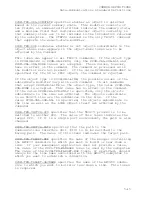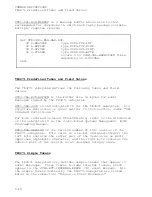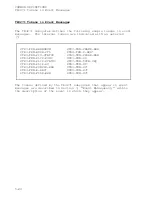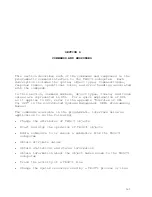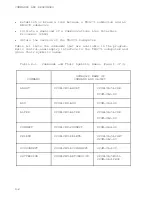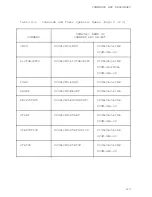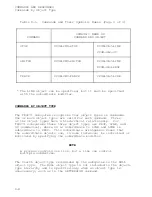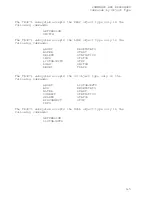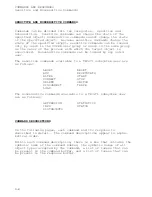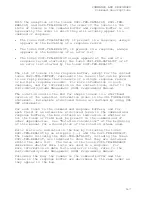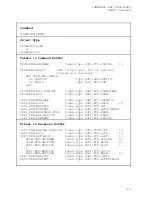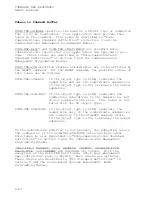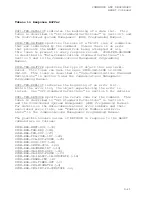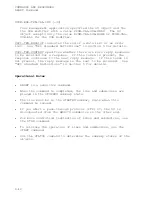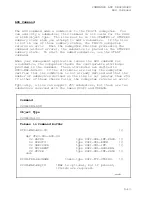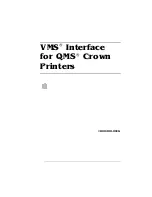
COMMANDS AND RESPONSES
ABORT Command
ABORT Command
The ABORT command terminates the operation of the specified
object and clears any existing connection to the object. When
the subsystem finishes processing the command, the specified
object is placed in the STOPPED summary state. You can abort a
line or a subdevice, but not a process.
When you use the ABORT command, note that the termination is
done without regard to processing currently in progress for
the specified object. All activities being performed by the
object are halted, and files and listings might be left in an
inconsistent or incomplete state. If you issue this command
while the line is in the DIAG summary state, the TR3271 subsystem
returns an error.
When your management application issues the ABORT command for a
line, the subsystem checks for the optional subordinate-modifier
token.
•
If the value of the modifier is ZCOM-VAL-SUB-ONLY, only the
subdevices attached to the specified line are aborted.
•
If the value of the modifier is ZCOM-VAL-SUB-ALL, the subsys-
tem aborts all the associated subdevices and then aborts the
line.
•
If the value is ZCOM-VAL-SUB-NONE, or if the subordinate
modifier is not present, the subsystem checks the state of the
subordinate subdevices. The subordinate subdevices must be in
the STOPPED summary state. If any of the subdevices are in
the STARTED summary state, the TR3271 subsystem rejects the
command and returns an error.
When your management application issues the ABORT command for
a subdevice, the subsystem aborts only the specified subdevice.
The SU object has no subordinates. However, your management
application can specify the subordinate modifier with the value
ZCOM-VAL-SUB-NONE. This value causes the subsystem to abort
only the specified subdevice. If your management application
specifies the ZCOM-VAL-SUB-ONLY or ZCOM-VAL-SUB-ALL value, the
TR3271 subsystem returns an error.
If your management application needs to abort a pass-through
protocol (PTP) subdevice, it is recommended that you disconnect
the subdevice first to avoid losing data.
6-8


